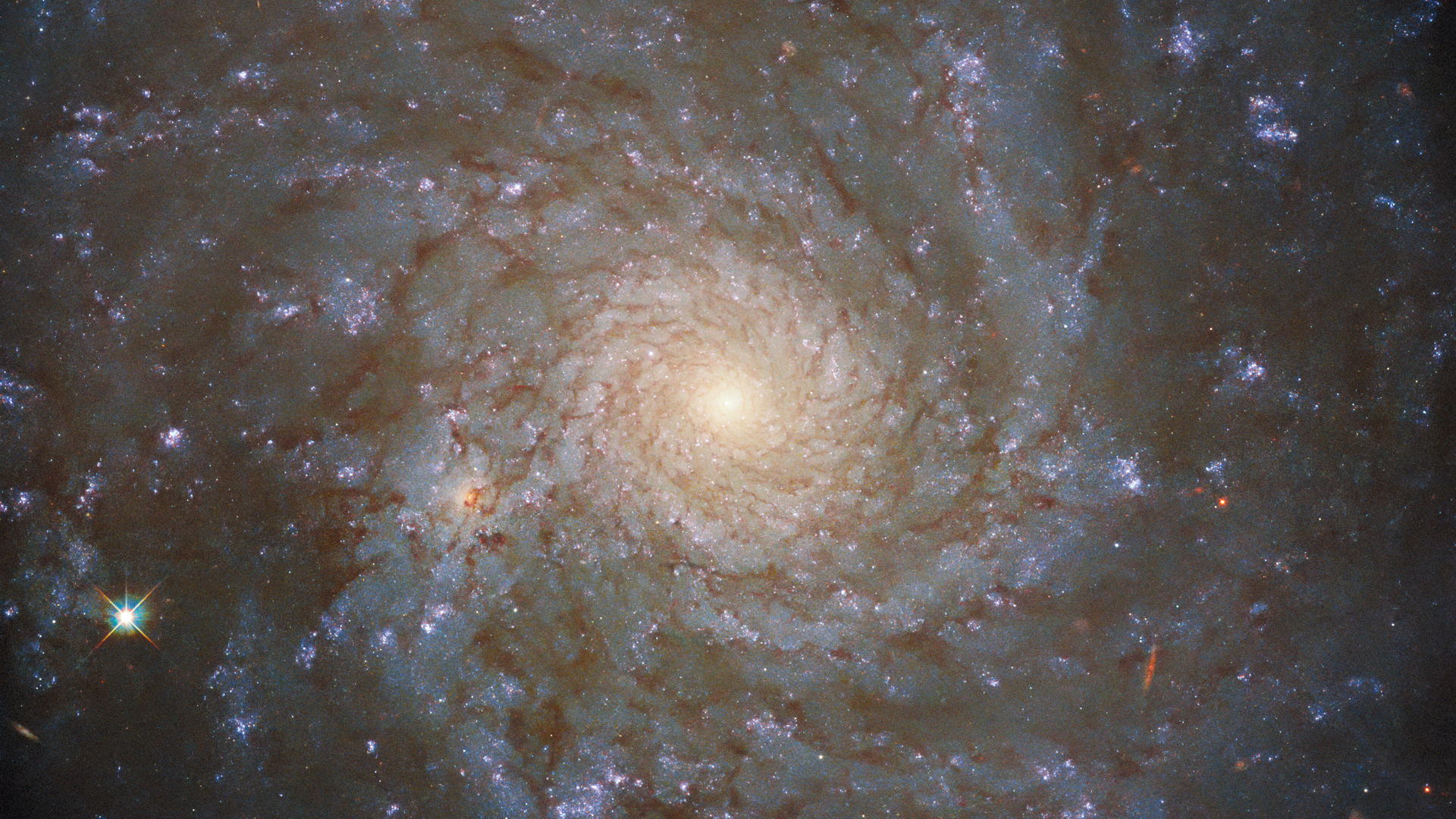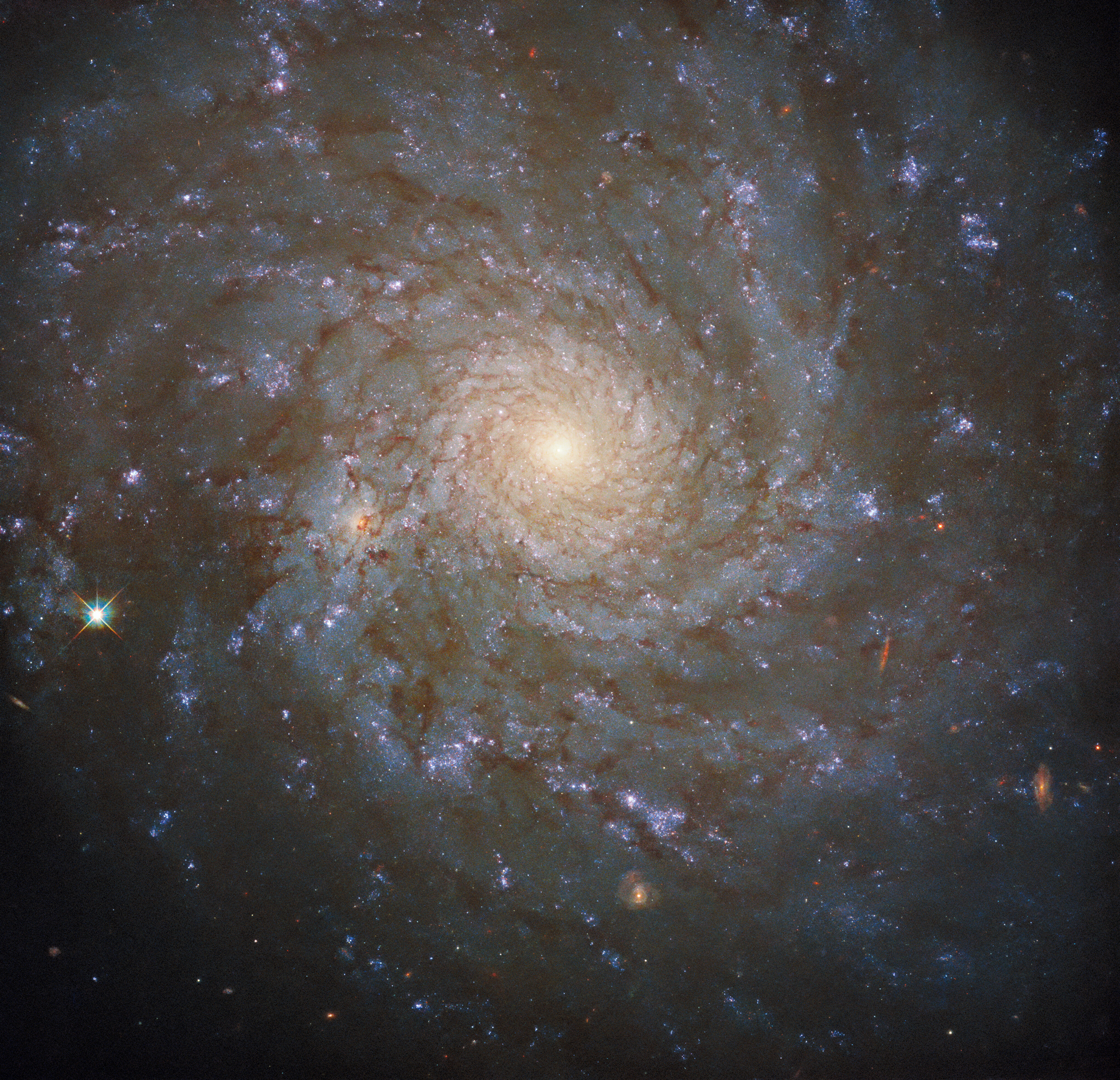Hubble telescope spies striking spiral galaxy that's part of a huge cosmic structure
The cluster that includes this galaxy has more than 1,000 members.

The Hubble Space Telescope caught a galaxy on camera that underlies a much larger structure, known as the Virgo Cluster.
The image of spiral galaxy NGC 4571, approximately 60 million light-years from Earth, is part of a partnership between Hubble and other telescopes to provide more information about huge collections of stars.
The galaxy is part of the Virgo Cluster of galaxies that contains more than 1,000 members, the European Space Agency said in a statement. The cluster also encompasses the Local Group, which is the set of galaxies nearby and including our own galaxy, the Milky Way.
Astronomers are not only interested in looking at individual galaxies, but also at examining them in context of their environments to learn more about how stars are formed and how galaxies evolve over billions of years.
Related: The best Hubble Space Telescope images of all time!

The fresh image of NGC 4571 is part of an observation program that combines work from Hubble with work from the ground-based Atacama Large Millimeter/submillimeter Array (ALMA) in Chile.
Hubble is optimized for infrared (heat-seeking), ultraviolet and visual wavelengths, while ALMA's millimeter wavelengths (between infrared and radio) allow the 66 telescopes of the Chilean array to peer through dust at high resolution.
Get the Space.com Newsletter
Breaking space news, the latest updates on rocket launches, skywatching events and more!
ALMA, explained the space agency, can "detect the clouds of cool interstellar dust which give rise to new stars," while Hubble's ultraviolet work "allows astronomers to pinpoint the location of hot, luminous, newly formed stars."
The project aims to provide a database of star-forming areas for future science, including deep-space observations from the James Webb Space Telescope that launched Dec. 25. Webb is aligning its mirrors and its instruments and is expected to start work in June.
Follow Elizabeth Howell on Twitter @howellspace. Follow us on Twitter @Spacedotcom or Facebook.
Join our Space Forums to keep talking space on the latest missions, night sky and more! And if you have a news tip, correction or comment, let us know at: community@space.com.

Elizabeth Howell (she/her), Ph.D., was a staff writer in the spaceflight channel between 2022 and 2024 specializing in Canadian space news. She was contributing writer for Space.com for 10 years from 2012 to 2024. Elizabeth's reporting includes multiple exclusives with the White House, leading world coverage about a lost-and-found space tomato on the International Space Station, witnessing five human spaceflight launches on two continents, flying parabolic, working inside a spacesuit, and participating in a simulated Mars mission. Her latest book, "Why Am I Taller?" (ECW Press, 2022) is co-written with astronaut Dave Williams.
